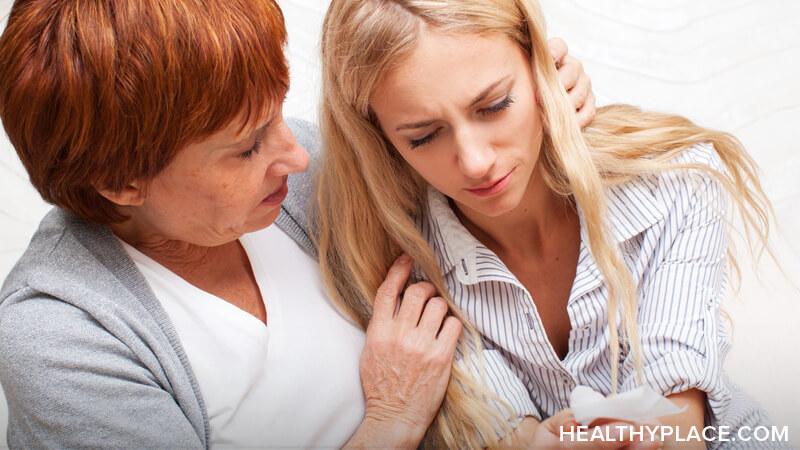Mental Health First Aid for Suicide Prevention

Knowing how to give mental health first aid for suicide prevention is important for everyone, but we often don't know how to do it. After graduating from a community college in 2014, I accepted a position as a peer support specialist at a local mental health agency. Prior to this job, I worked at a group home, and the training was very similar -- first aid, CPR, and nonviolent crisis intervention. However, my new position also required Mental Health First Aid, a formal eight-hour course on how to respond to someone in crisis. The Mental Health First Aid intervention can be crucial in suicide prevention and getting someone the appropriate help they need.
The Mental Health First Aid program packed tons of information into one long, yet productive, day of training. We had discussions, watched videos, and participated in practical exercises. The exercises were voluntary as we were warned that they could be triggering.
Mental Health First Aid was created for the layperson, and I recommend members of the community to take this training -- even those without mental health experience. In fact, the training is especially for those without prior mental health experience. This training is an important step to suicide prevention in our communities because it teaches everyday people how to appropriately respond to friends and neighbors who may be feeling suicidal.
Mental Health First Aid's 5-Point Action Plan: ALGEE
A is for: assess for risk of suicide or harm. Don't skirt around the subject. It is important to ask a person directly if she feels like harming herself ("Is Talking About Suicide with a Suicidal Person Dangerous?"). It's also important to take her seriously. I've had suicidal thoughts in the past, and I can't say I'll never have them again. For me, it's important to remember what that feels like and to listen and speak from a place of empathy. That's important to any peer support.
L is for: listen non-judgementally. It is important for the person to feel understood and respected.
G is for: give reassurance and information. The training provides information to provide a person with more support and help. At our training, we were given a book to take with us filled with local resources.
E is for: encourage appropriate professional help. It's important to remember that mental illnesses are real medical conditions that require professional care. The training gives an overview of the different types of mental health treatment available.
E is for: encourage self-help and other support strategies. Mental Health First Aid will give you different ideas to suggest. This could range from exercise and meditation to participating in support groups.
Mental Health First Aid Is for Everyone
I worked for this mental health agency for three years, and during my time there, I did not encounter many suicidal clients. However, I think Mental Health First Aid is a very helpful training for everyone because it prepares you to help others in the community. It's just like first aid and CPR; you never know when you're going to need it, and you could possibly need it at any moment.
To learn more and find a local training, please visit mentalhealthfirstaid.org.
If you feel you may hurt yourself or someone else, call 9-1-1 immediately.
If you need help with distressing thoughts (including suicidal thoughts), call the National Suicide Prevention Lifeline at 1-800-273-8255
For more information on suicide, please see our suicide resources here.
APA Reference
Rahm, M.
(2018, September 19). Mental Health First Aid for Suicide Prevention, HealthyPlace. Retrieved
on 2026, January 6 from https://www.healthyplace.com/blogs/recoveringfrommentalillness/2018/9/mental-health-first-aid-for-suicide-prevention